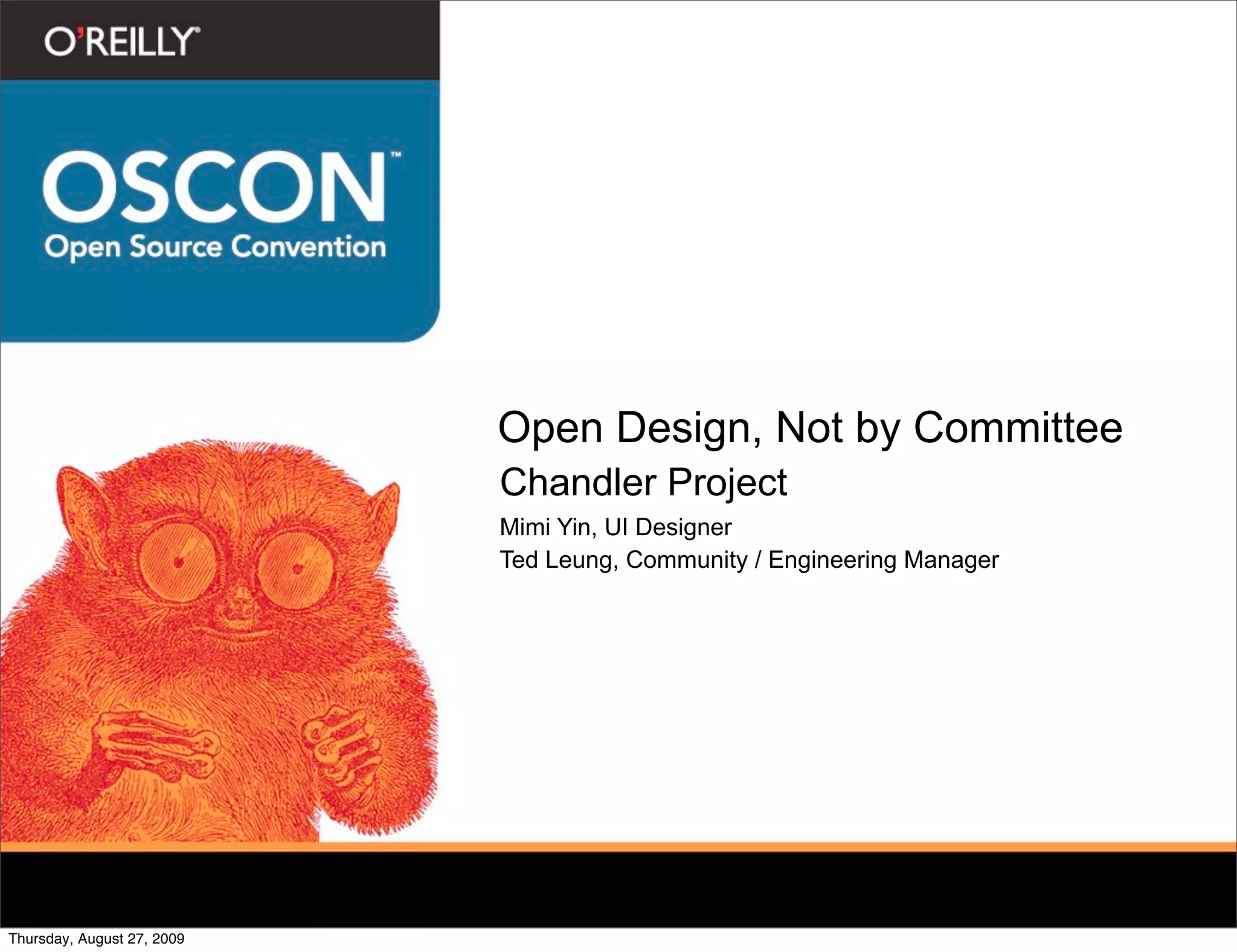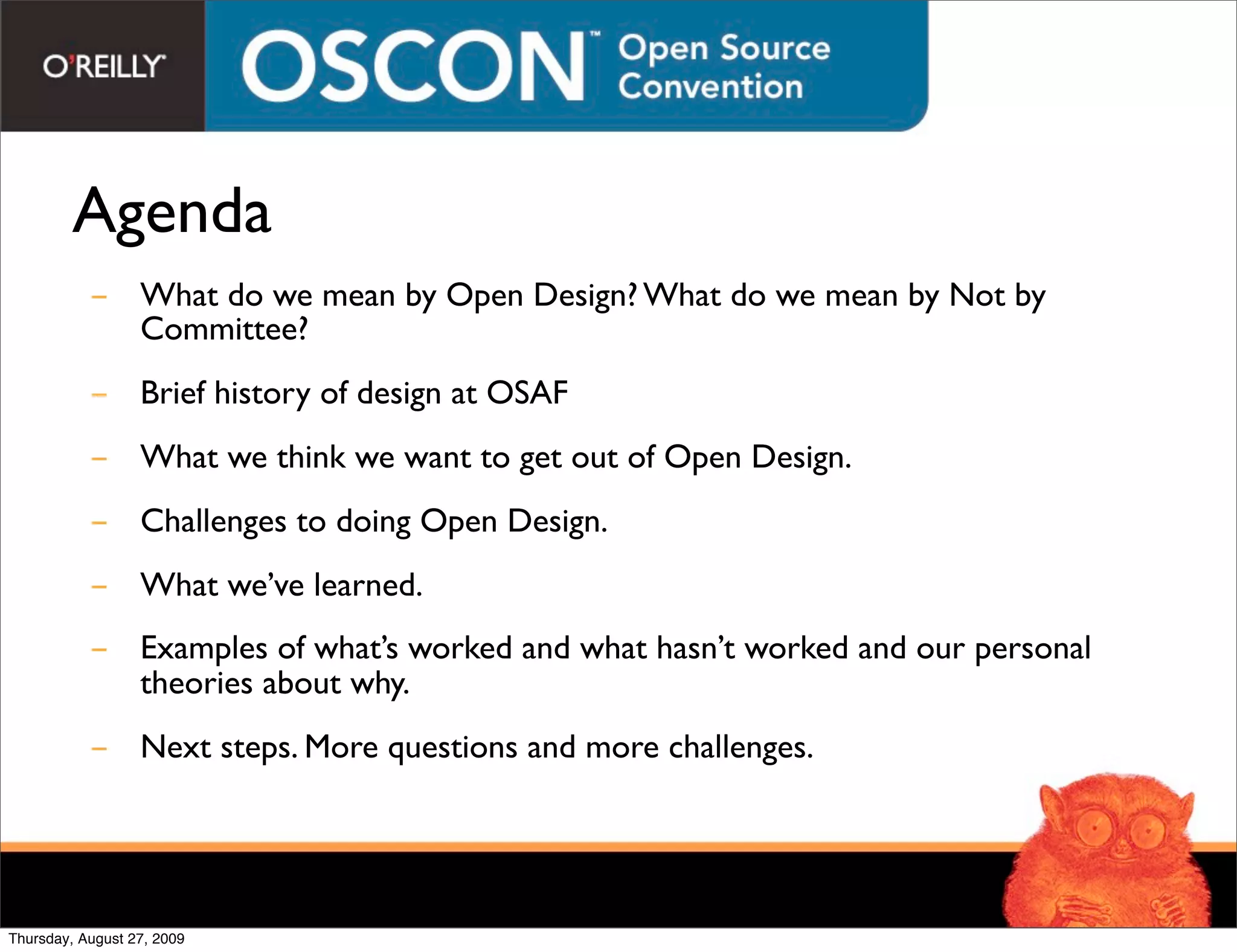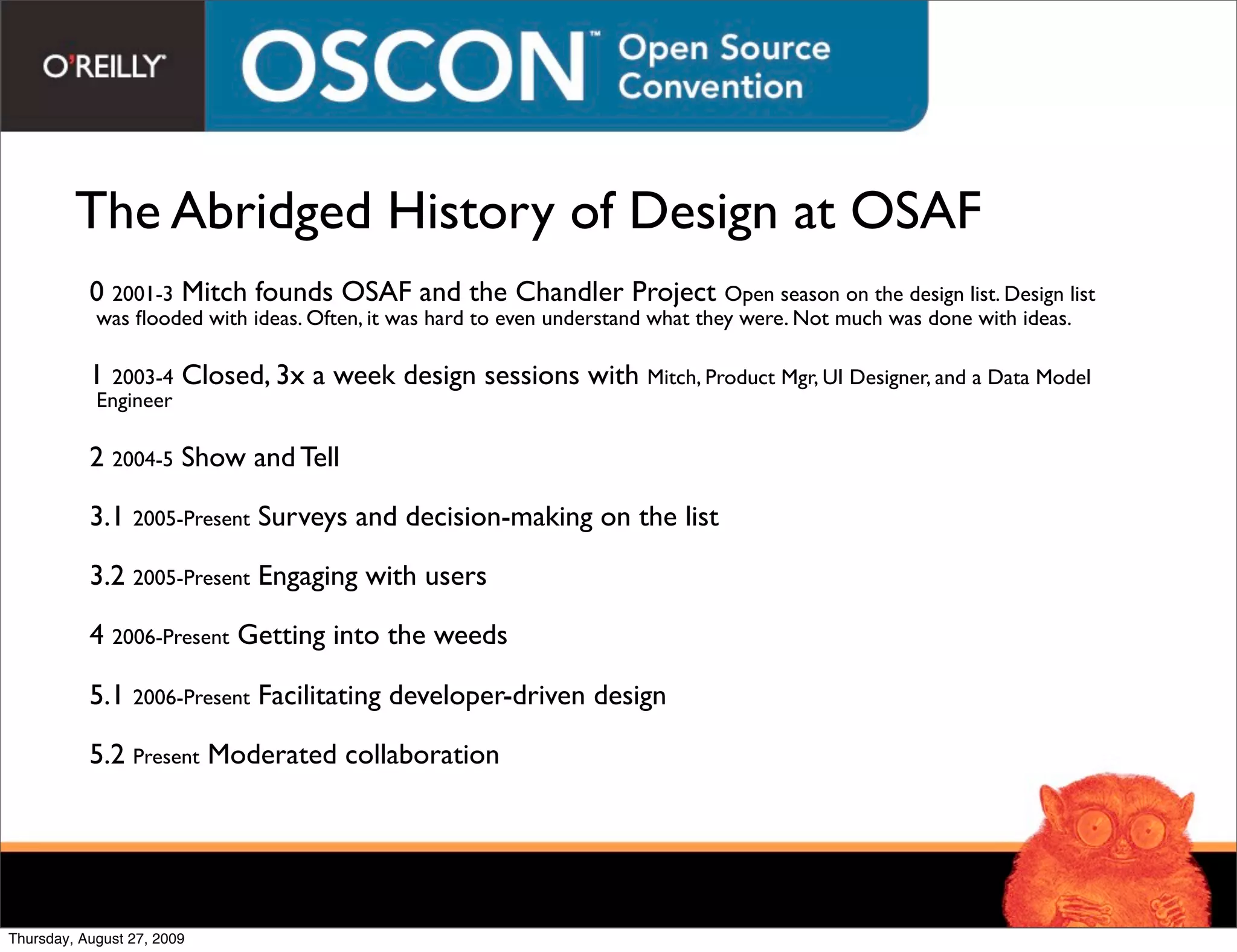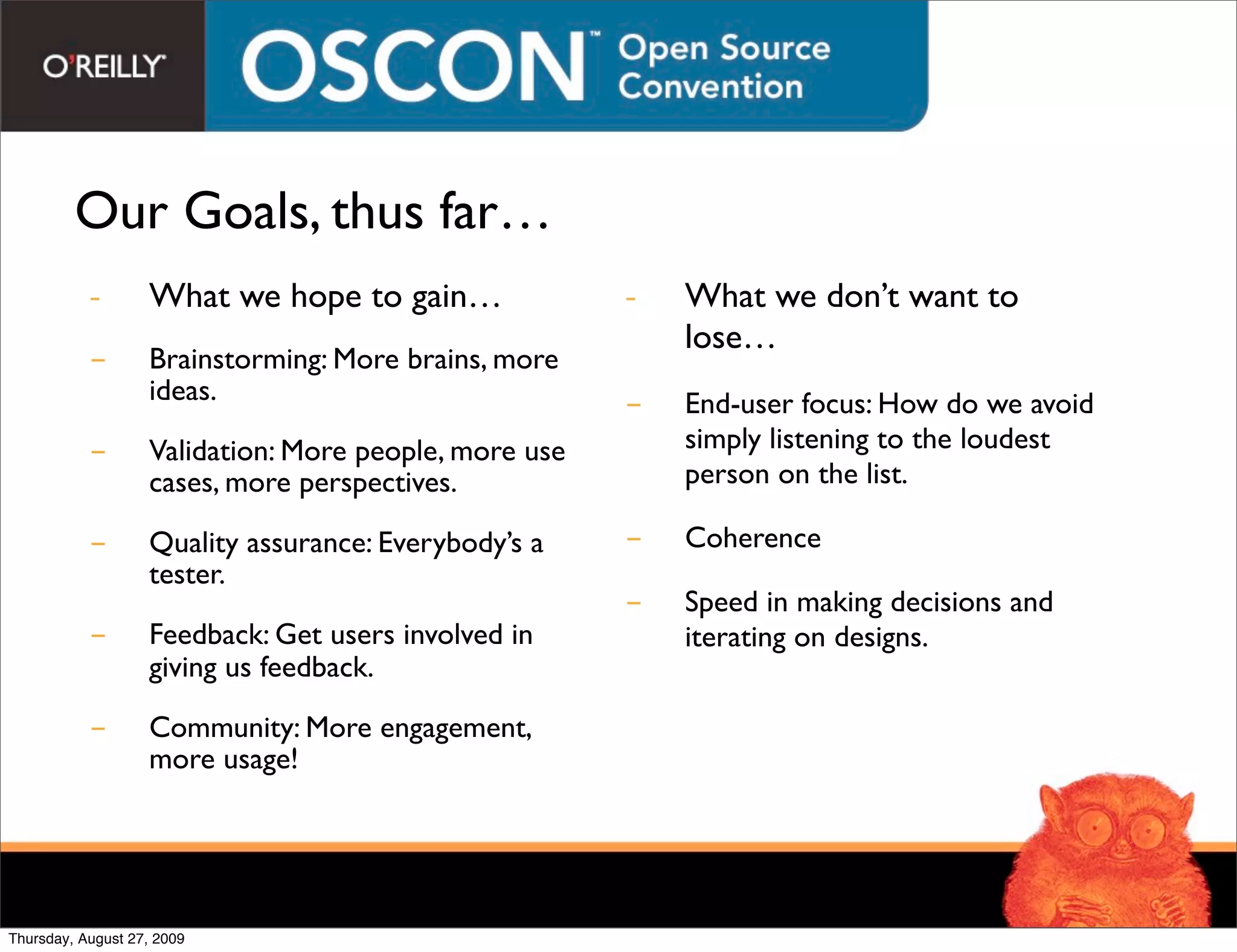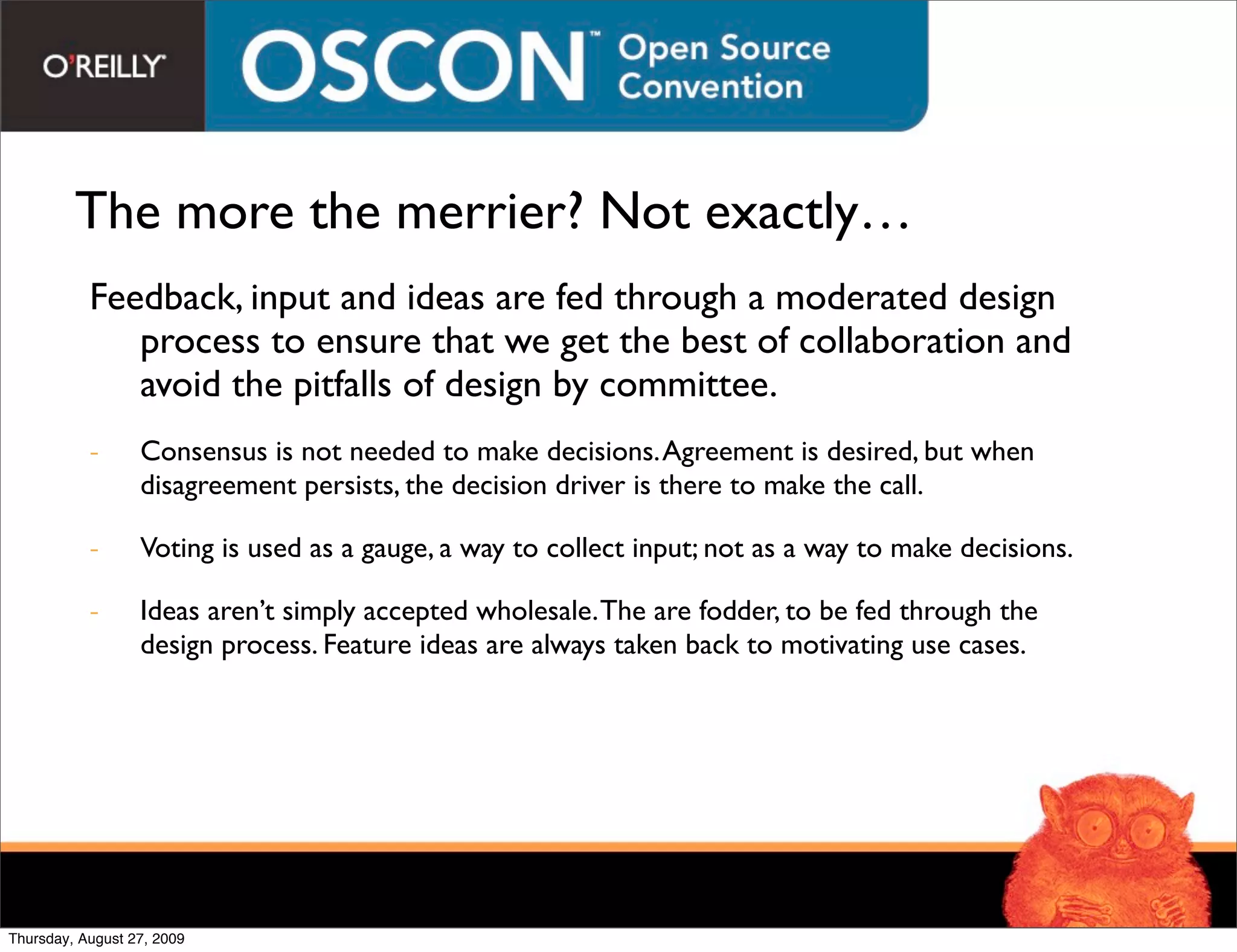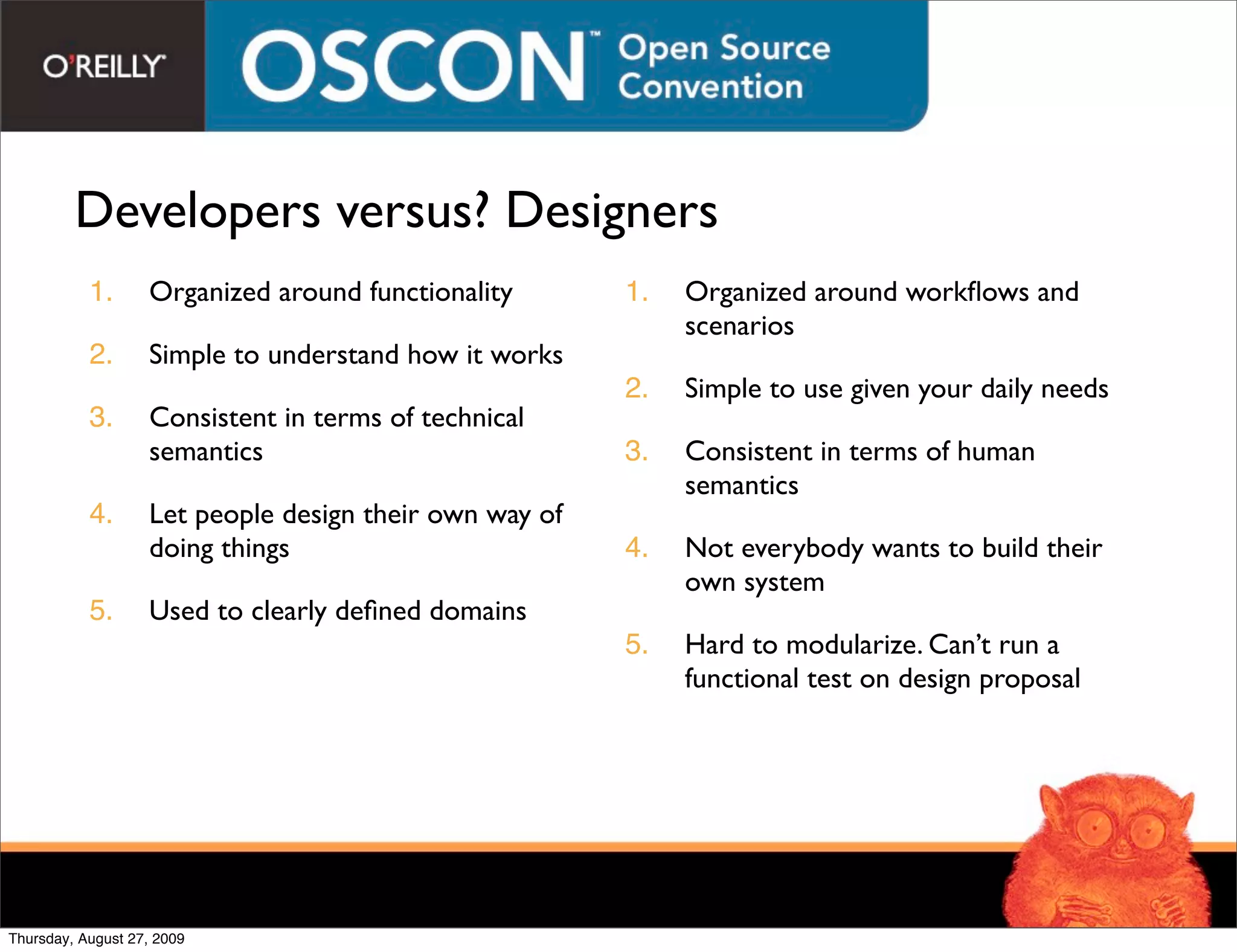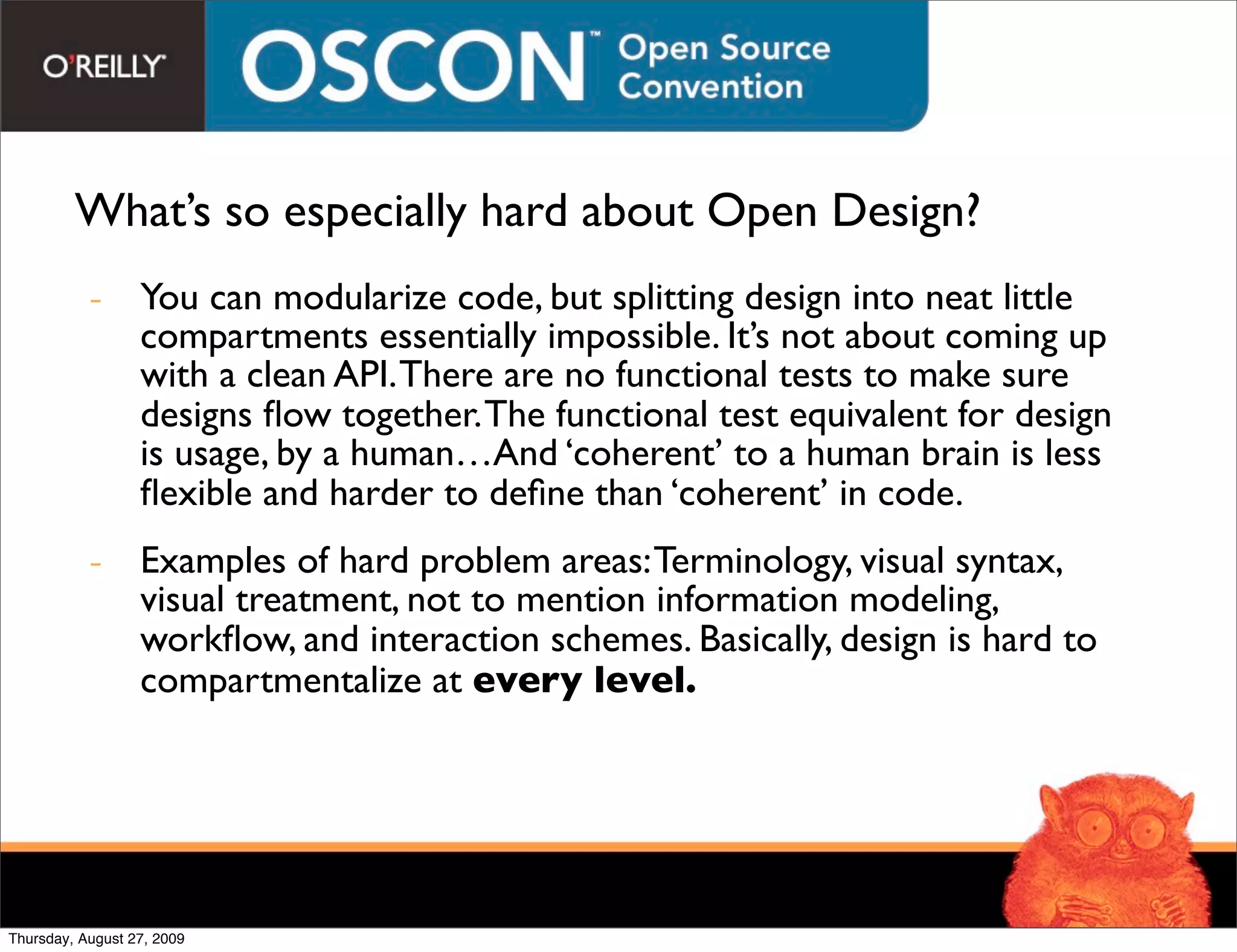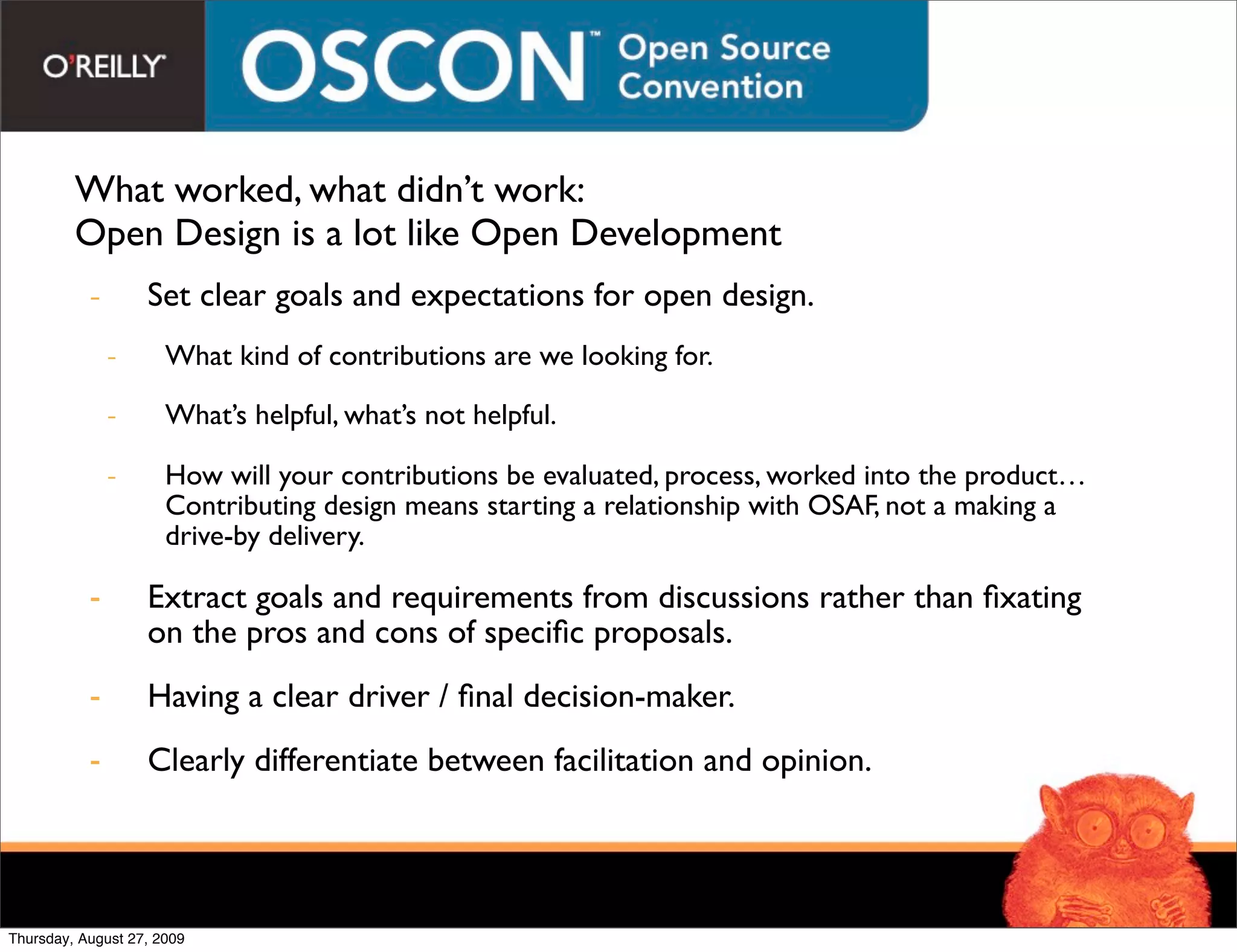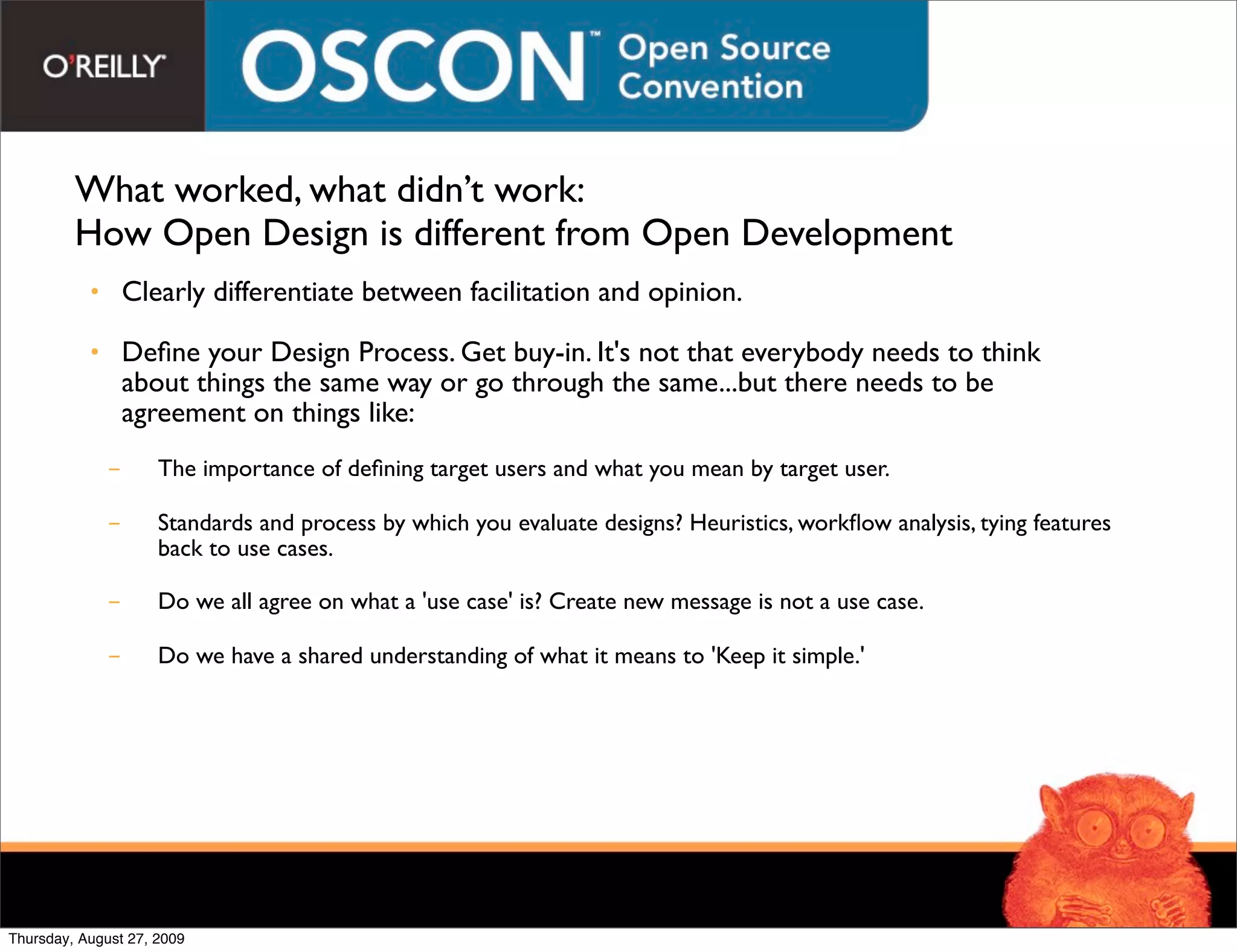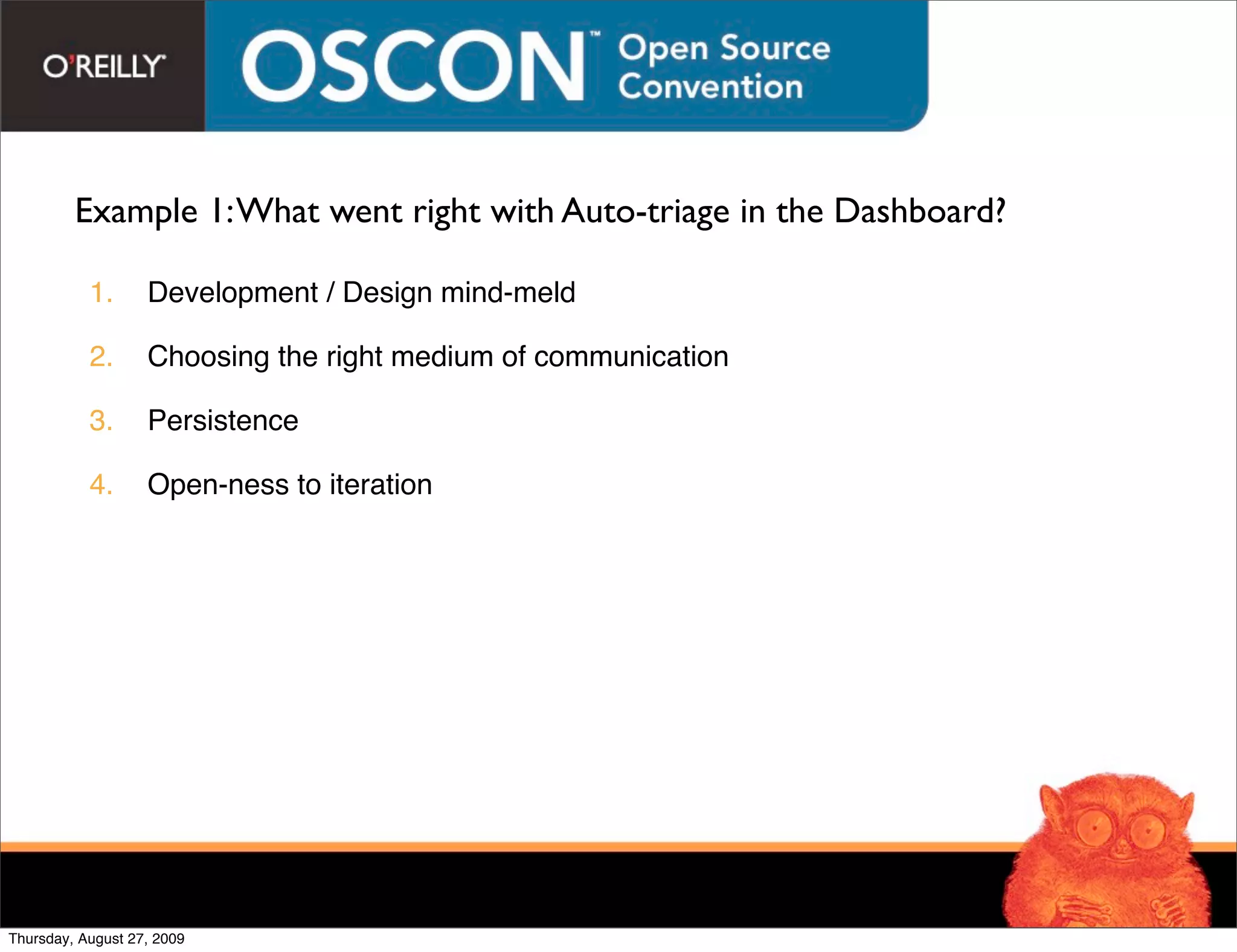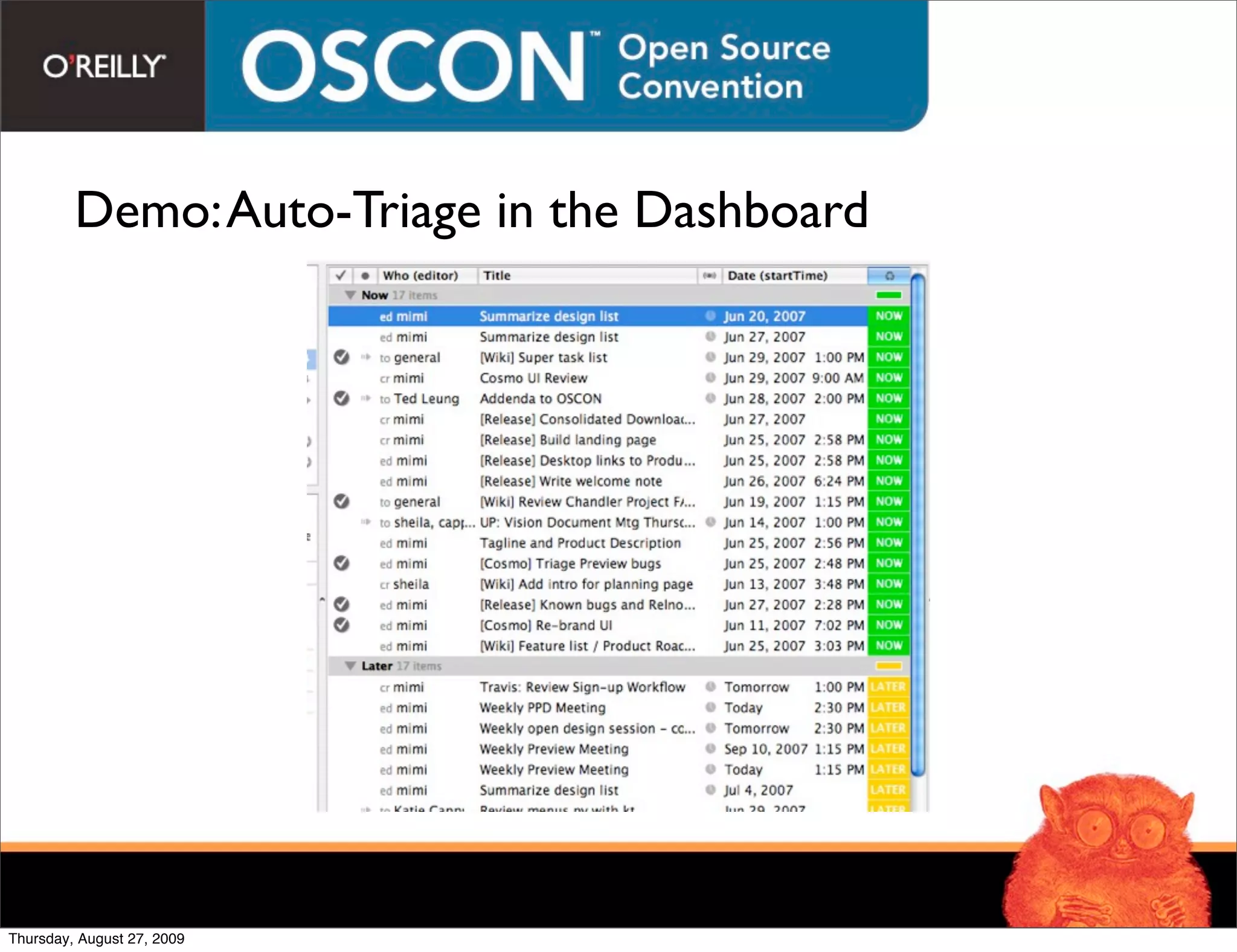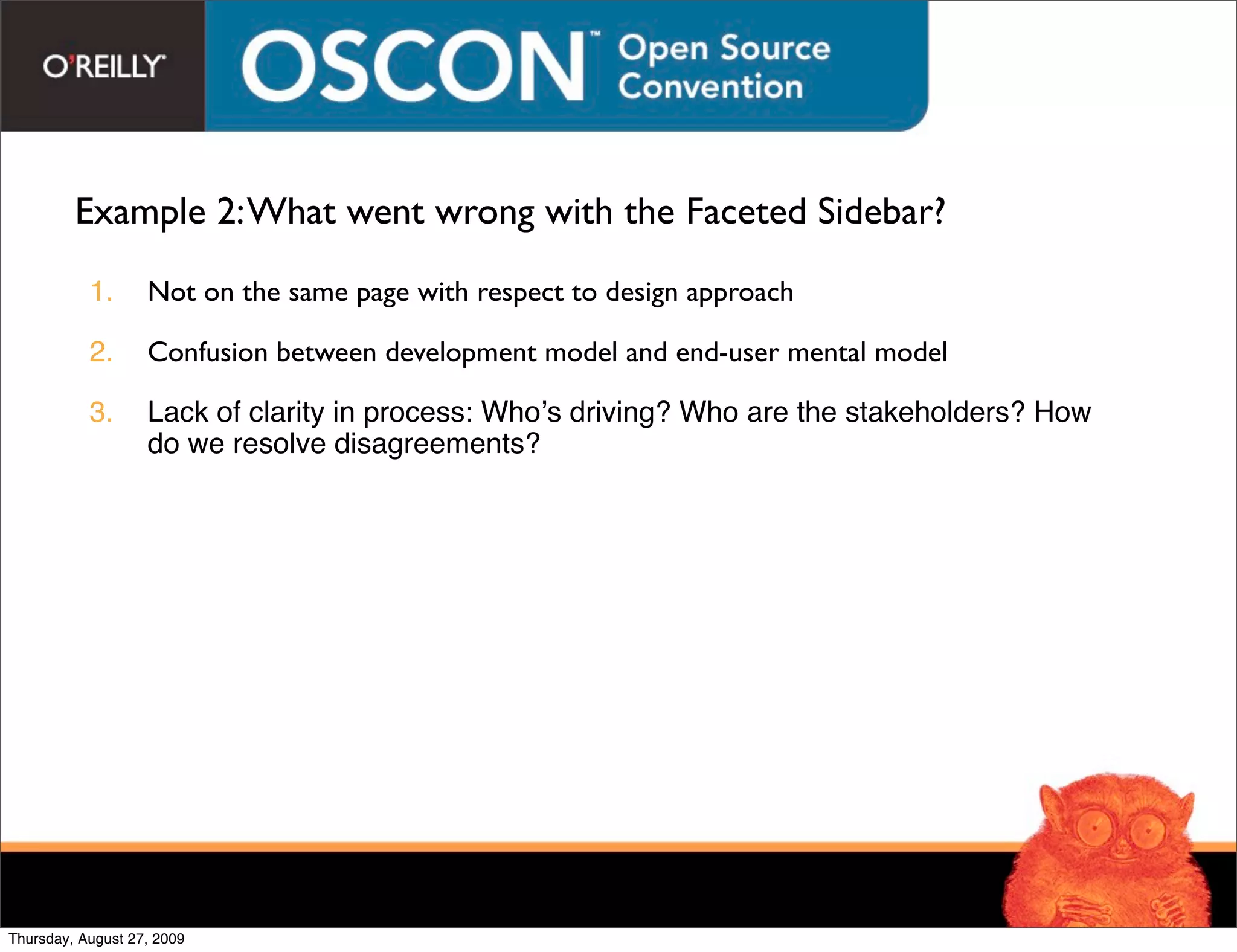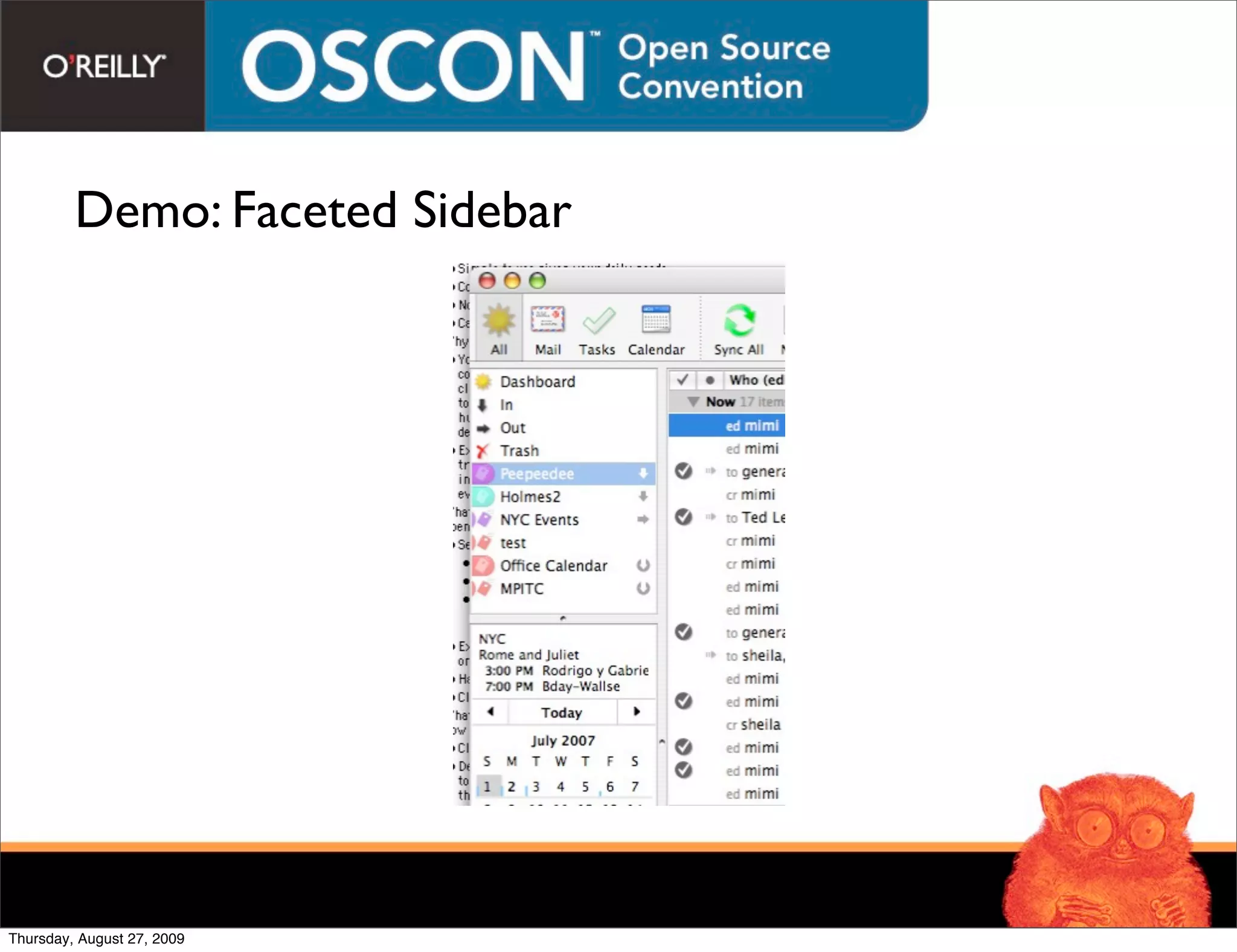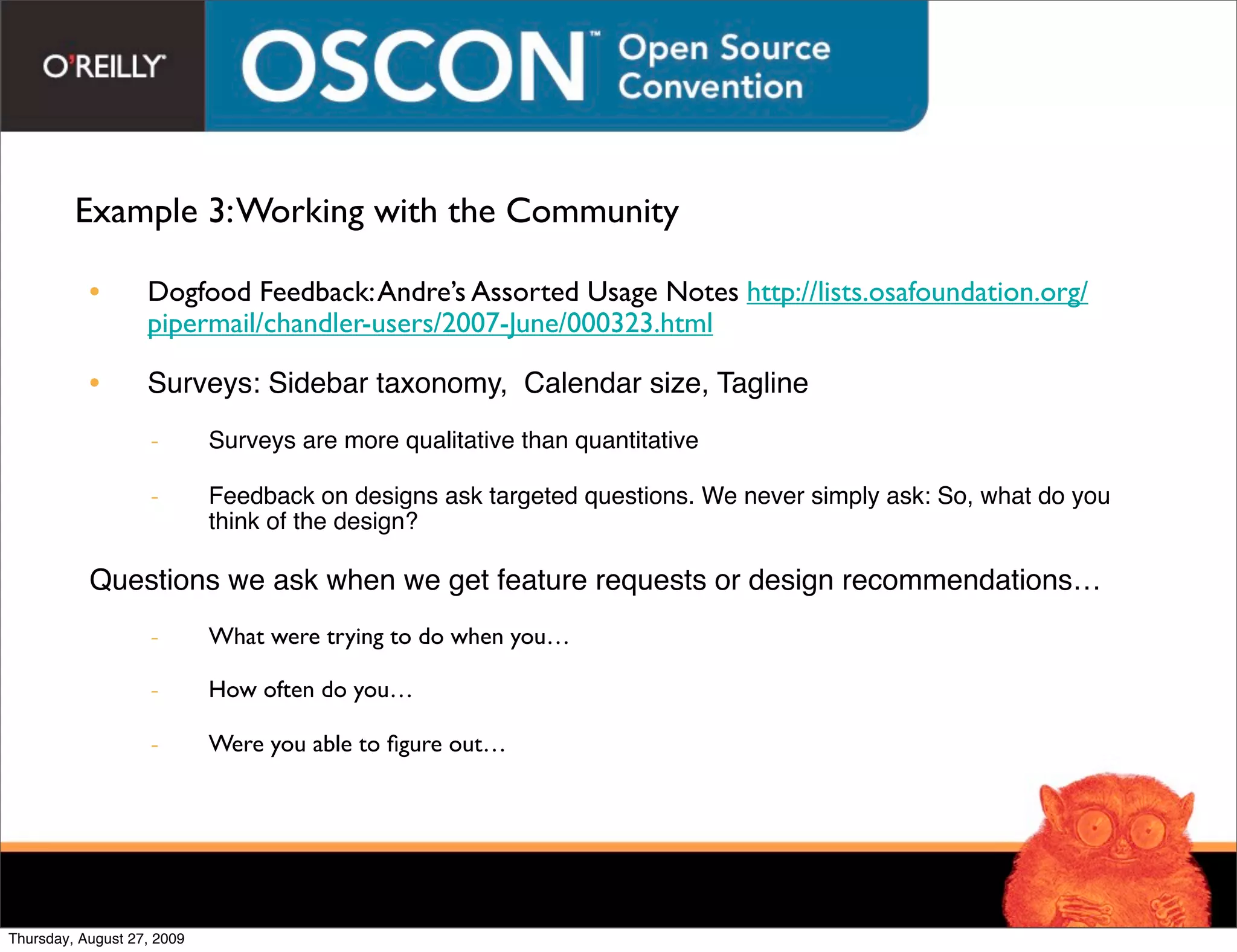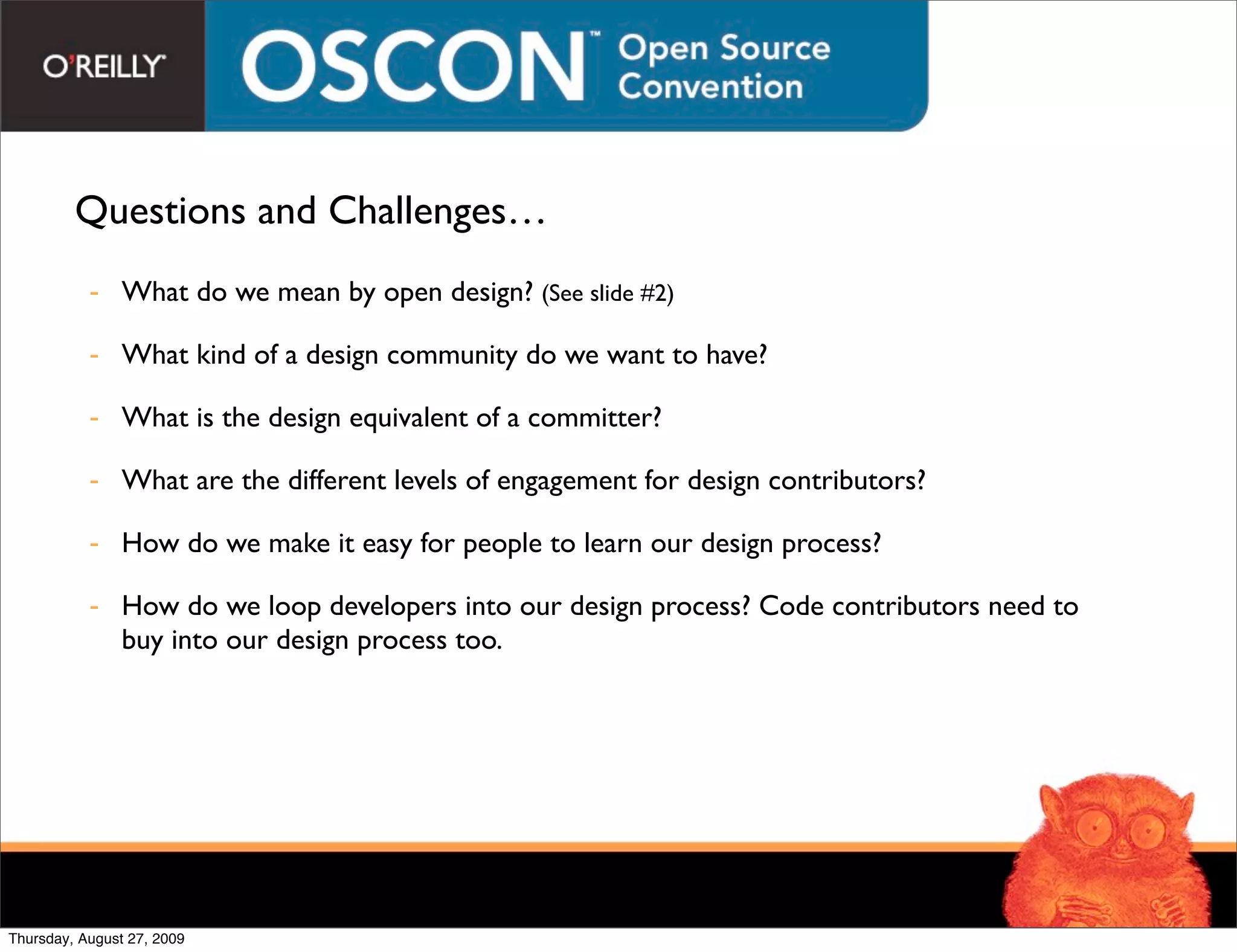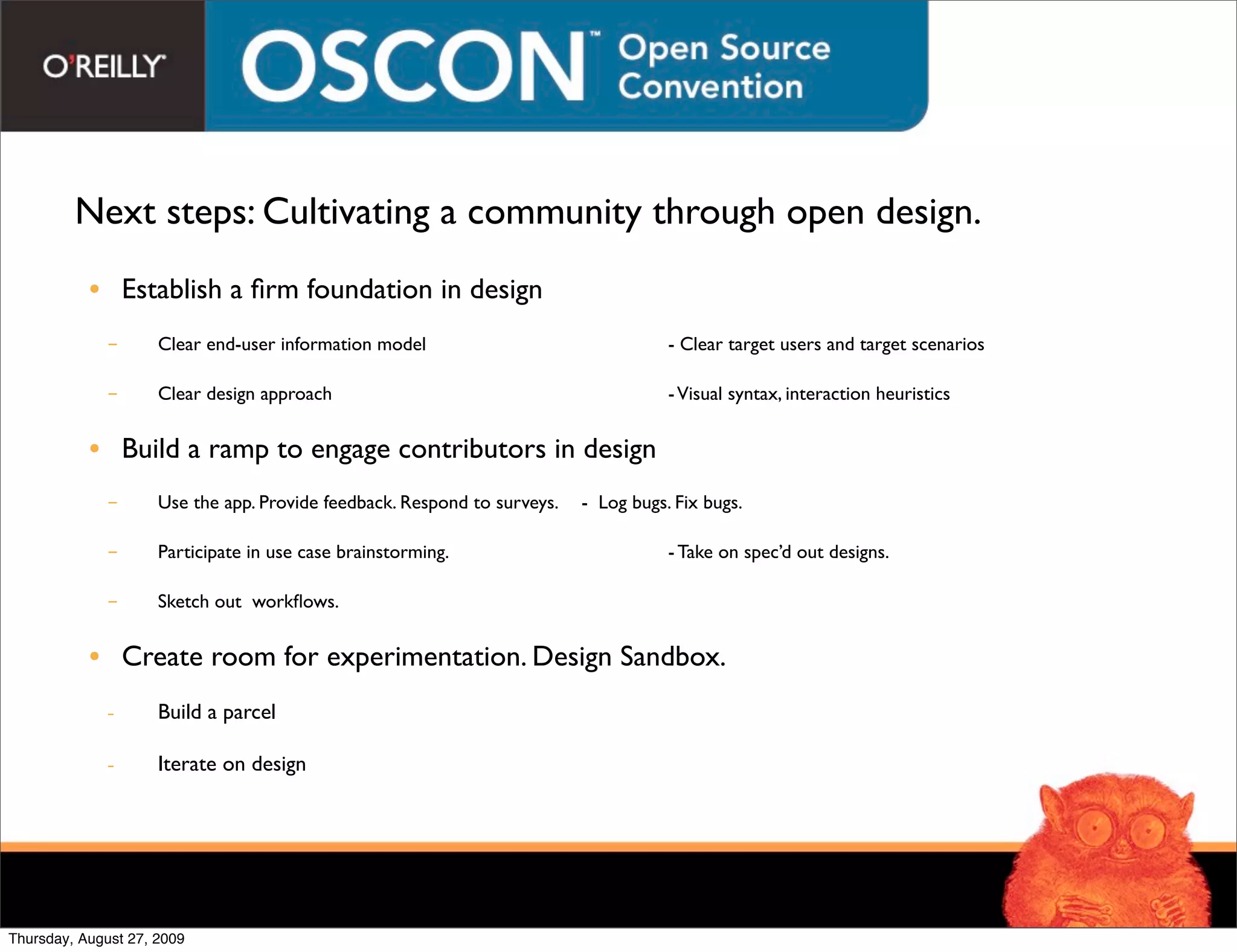1) The document discusses challenges with open design not driven by committee, including difficulties modularizing design and lack of functional tests for designs.
2) Examples are provided of what worked with open design processes at OSAF, such as clear goals and decision drivers, and what didn't work, like lack of agreement on design approaches.
3) The document calls for establishing a firm design foundation with clear users, scenarios and approaches, and cultivating community engagement through participation and experimentation to further open design goals.
